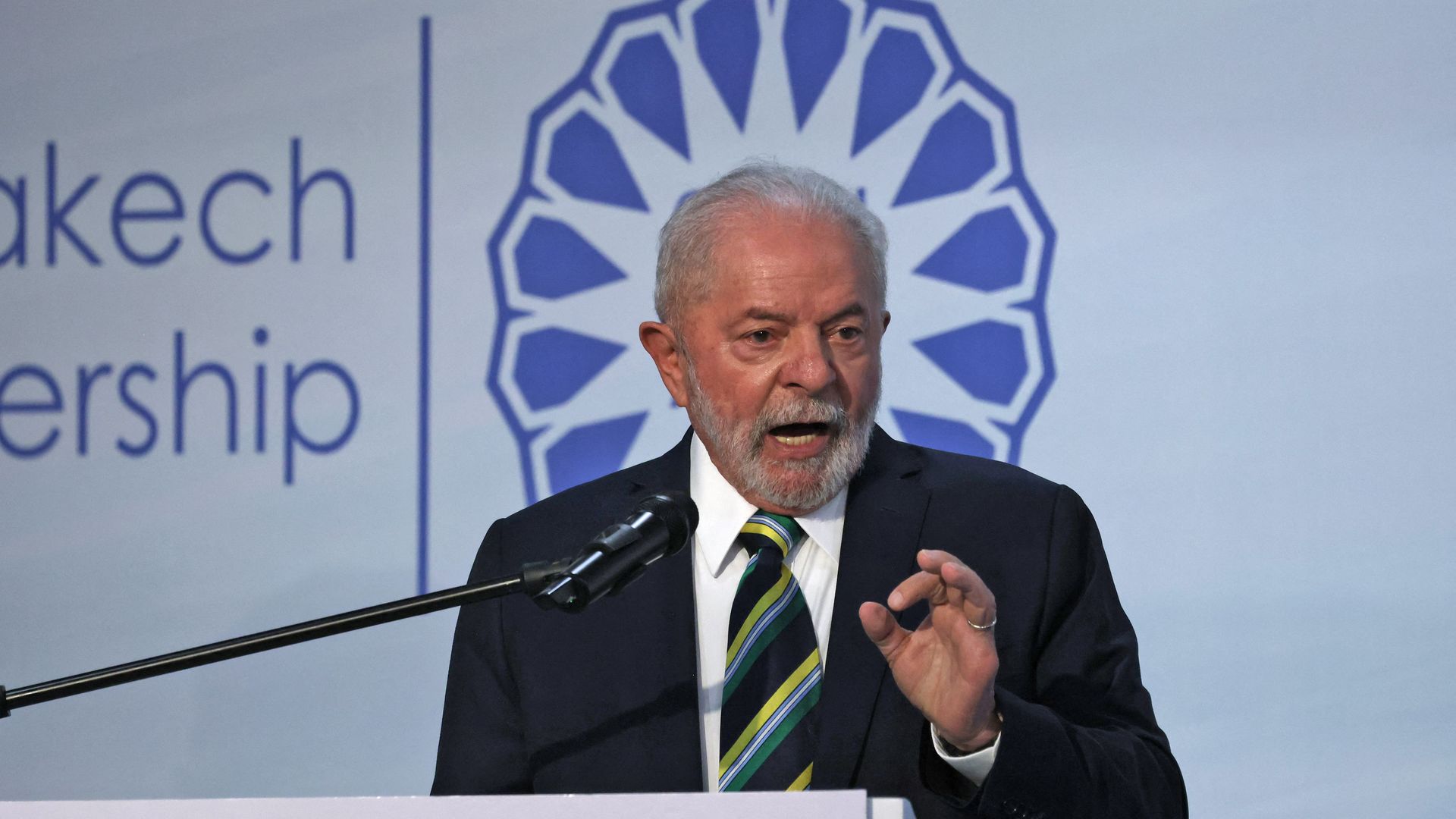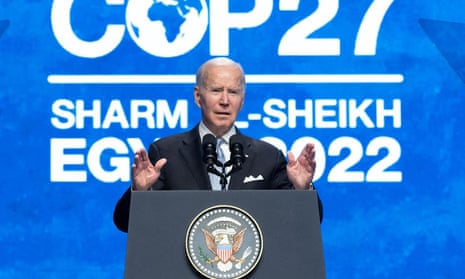November 25, 2022
COP27 – Climate Change Conference in Sharm el-Sheikh, Egypt

The United Nations Framework Conference on Climate Change (UNFCCC) is attended by Heads of State and representatives from 190+ countries. It has been meeting annually since 1997 when it was “COP3”. It usually convenes every November or December. Attending or not attending the conference by world leaders is significant to all those who have an interest in climate change. Most of the world’s dignitaries attended COP27, as expected with special emphasis on Brazil’s president-elect, Luiz Inácio Lula de Silva. Although Lula is not yet President of Brazil, his presence and commitment to climate change mitigation are very important.
COP27 began on November 7, as planned, with important opening words from the UN Climate Change Executive Secretary, Simon Stiell of Granada. He was appointed by the UN General Secretary, Antonio Guterres to this position. Mr. Stiell reminded us that the last two COPs, COP25 in Katowice, Poland in 2020 and COP26 in Glasgow, Scotland in 2021, aligned the partners with the Paris Agreement (COP21 in 2015). Now, COP27 was to take this plan to the implementation level. The Paris Agreement, signed by 196 countries, legally committed the partners to hold the rise in temperature to less than 2 °C and preferably to 1.5 °C. It would be a coordinated, economic shift of all countries toward a decrease in CO2 emissions.
The conference began with the usual protocols: the opening statements by COP President, Sameh Shoukry, and the UN General Secretary, Antonio Guterres. Guterres highlighted the work that’s been done throughout COP meetings and the important work done by other related groups in spurring the governments onward toward a long-awaited world solution to climate change. The Executive Secretary spoke directly to the conference of parties and asked that the following three actions be taken:
1.) Align themselves with the Paris Agreement and move negotiations into concrete actions. Also, to “look closer at how the global financial architecture can be fit for purpose in line with the Paris commitments.”
2.) “To cement progress on these critical workstreams – mitigation, adaptation, finance, and crucially – loss and damage.” The finances are key to making mitigation, adaptation, and to finance those countries least responsible for climate change so that they can adapt and recover from climate disasters.
3.) “To enhance the delivery of the principles of transparency and accountability throughout our process.” Integrity is paramount in going forward.
 One highlight of the conference was the inclusion of youth insights. COP27 was given the aspirational title of ‘Future Now’ to represent expectations of the young people and other enter-prising entities. One personality ostensibly absent by choice from this COP was Greta Thunberg, but the demonstrations by young people still took place, with a bit less fanfare. However, the
One highlight of the conference was the inclusion of youth insights. COP27 was given the aspirational title of ‘Future Now’ to represent expectations of the young people and other enter-prising entities. One personality ostensibly absent by choice from this COP was Greta Thunberg, but the demonstrations by young people still took place, with a bit less fanfare. However, the  youth were featured speakers at many sessions and Ghana’s 10-year old activist, Nakeeyat Dramani Sam got a standing ovation after her presentation on Loss and Damage. A truly exciting moment in the proceedings!
youth were featured speakers at many sessions and Ghana’s 10-year old activist, Nakeeyat Dramani Sam got a standing ovation after her presentation on Loss and Damage. A truly exciting moment in the proceedings!
A major mitigation effort regarding climate change is in halting deforestation. There were several sessions on this subject including one High Level Dialogue panel discussion. The importance of forests on the Earth can’t be underestimated. Deforestation and forest degradation have claimed an area larger than twice the size of Mexico between 1990 and 2020 and is still ongoing. 90% of the world’s deforestation between 2000 and 2018 is attributed to agricultural expansion. About one-third of the mitigation needed to stabilize global warming comes from nature-based solutions. This makes financing forests a very cost-effective solution.
 This is where Brazil’s president-elect, Lula de Silva, comes in. One of the brightest personalities at COP27 is committed to dealing with the deforestation frenzy going on in Brazil. A noteworthy concept, the Amazon rainforest gives the country a status of power that “transcends its borders” (Washington Post, Nov. 16). Central to his campaign was his dedication to the environment. He is quoted often but his comment in his election victory address, about a week before COP27, is memorable: “A standing tree is worth more than tons of wood illegally harvested by those who think only of easy profits.” Although he’ll face much opposition in Brazil on this subject, he is definitely a hero at this conference.
This is where Brazil’s president-elect, Lula de Silva, comes in. One of the brightest personalities at COP27 is committed to dealing with the deforestation frenzy going on in Brazil. A noteworthy concept, the Amazon rainforest gives the country a status of power that “transcends its borders” (Washington Post, Nov. 16). Central to his campaign was his dedication to the environment. He is quoted often but his comment in his election victory address, about a week before COP27, is memorable: “A standing tree is worth more than tons of wood illegally harvested by those who think only of easy profits.” Although he’ll face much opposition in Brazil on this subject, he is definitely a hero at this conference.
A most familiar bright spot in the conference was Mary Robinson, former president of Ireland (1990-1997), progressive transformer of Irish politics and a champion climate justice campaigner. She is also chair of The Elders, an organization representing global leaders for peace, justice and human rights (The Irish Times, Nov. 8). She shows up at climate conferences and consistently stands on the side of environmental justice, encouraging developing countries to demand their right to existence and receive the support needed. She focuses on gender, water and other issues closest to life on the planet. Her input is always valued at COP gatherings.
(1990-1997), progressive transformer of Irish politics and a champion climate justice campaigner. She is also chair of The Elders, an organization representing global leaders for peace, justice and human rights (The Irish Times, Nov. 8). She shows up at climate conferences and consistently stands on the side of environmental justice, encouraging developing countries to demand their right to existence and receive the support needed. She focuses on gender, water and other issues closest to life on the planet. Her input is always valued at COP gatherings.
A curious oddity at these climate conferences is the attendance of the fossil fuel industry lobbyists (Buzz, Nov. 10). This year they appeared in greater numbers, over 600 lobbyists, more than in previous conferences. Among other things they tout Liquefied Natural Gas (LNG) as the “bridge fuel” of the future. It was noted that more fossil fuel lobbyists show up than the number of persons representing the poorest nations who are facing the worst impacts of climate change.
While most countries feel greenhouse gas emission reduction goals are necessary, the most contentious item in the agenda is the financing for “Loss and Damage” (Aljazeera, Nov. 18) to those countries that are least responsible for climate change. This is referencing the developing or undeveloped nations of the world, who happen to be those that feel the brunt of damage, deaths, and destruction of their existence. Many of the developed countries are in agreement but the amount to be paid by these countries, as always, is the point of contention. The European Union’s (EU) twenty-seven countries arrived at a solution called a “two-pronged approach”. These EU nations will create a fund to be made available to poorer countries, and also phase down fossil fuels, an approach that combines mitigation with financing Loss and Damage. How large the fund would need to be and their fossil fuel emission reductions are still being worked out.
 A number of countries refused to participate in Loss and Damage. Even the United States, traditionally, has been walking away from this. The U.S. reaction, at first, to EU’s intelligent plan was described as a “deafening silence”. China and Saudi Arabia do not consider themselves developed countries and claim the finances should not come from them. They both, however, stand in agreement with the Paris Agreement to limit global warming to 1.5 °C. President Biden has brought the U.S. back into the Paris Agreement after it was originally signed by President Obama in 2016 and then exited by President Trump in 2017 (took effect in 2020) and then re-entered by Biden later in 2020.
A number of countries refused to participate in Loss and Damage. Even the United States, traditionally, has been walking away from this. The U.S. reaction, at first, to EU’s intelligent plan was described as a “deafening silence”. China and Saudi Arabia do not consider themselves developed countries and claim the finances should not come from them. They both, however, stand in agreement with the Paris Agreement to limit global warming to 1.5 °C. President Biden has brought the U.S. back into the Paris Agreement after it was originally signed by President Obama in 2016 and then exited by President Trump in 2017 (took effect in 2020) and then re-entered by Biden later in 2020.
While Biden signed the Paris Agreement, the U.S. was still not fully committed to anything yet. He gave a 23-minute speech to the assembly at COP27 (New York Times, Nov. 11) touting his accomplishments at home but gave no hint about what his plans are for Loss and Damage at that moment in time. He chose to meet with President Xi Jinping of China at the G20 meeting in Japan on the same weekend COP27 was ending. He did come to some sort of agreement with China on negotiating climate change though. This was considered an accomplishment since the two countries have not been on speaking terms amid the military build up around Taiwan. Both countries agree to the 1.5°C limit but have not done justice to the sense of urgency about climate change. Both wanted nothing to do with a fund for assisting the very countries bearing the brunt of the dangers of living with climate change.
COP27 did not end on the appointed date of Friday, November 18. Since the needed consensus was delayed, it continued all day and into the night on Saturday, November 19. After an all night working session COP27 came to a tentative agreement that highlighted an outline for funding vulnerable countries modeled on the EU two-pronged plan. Almost immediately afterwards, the U.S. announced that President Biden and his staff will be working toward an acceptance of the final COP plan. He will be directing John Kerry and his staff to work out an agreement that he can sign. While that global sense of urgency that most thought was needed to be successful at this conference was not reached, but the delayed sign-on procedure, along with the U.S.’s change of heart, could see a truly successful end to this conference at a follow-up climate change summit in the next few months. One could say, at this moment, COP27 ended with some real success!
Stay tuned, COP28 will take place in the United Arab Emirates from November 30 – December 12, 2023.
Sources of Bay Area Activities and Events
Friends of the Earth – located at the David Brower Center, Berkeley.
350BayArea – Includes other 350.org branches in the Bay Area.
Planet Drum – San Francisco bio-region awareness center.
Ecology Center – Berkeley sustainability center.
David Brower Center – The environmental center in Berkeley.
Sunflower Alliance – Bay Area umbrella organization for activism.
Sierra Club San Francisco Bay – Bay Area website.

The End